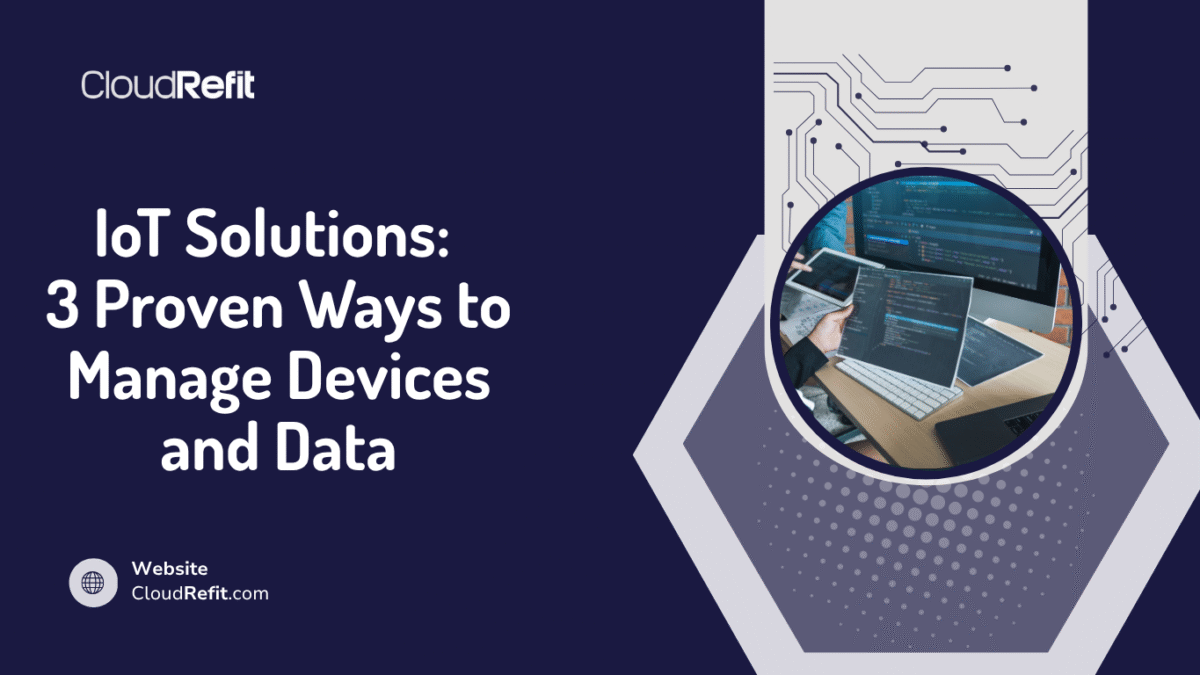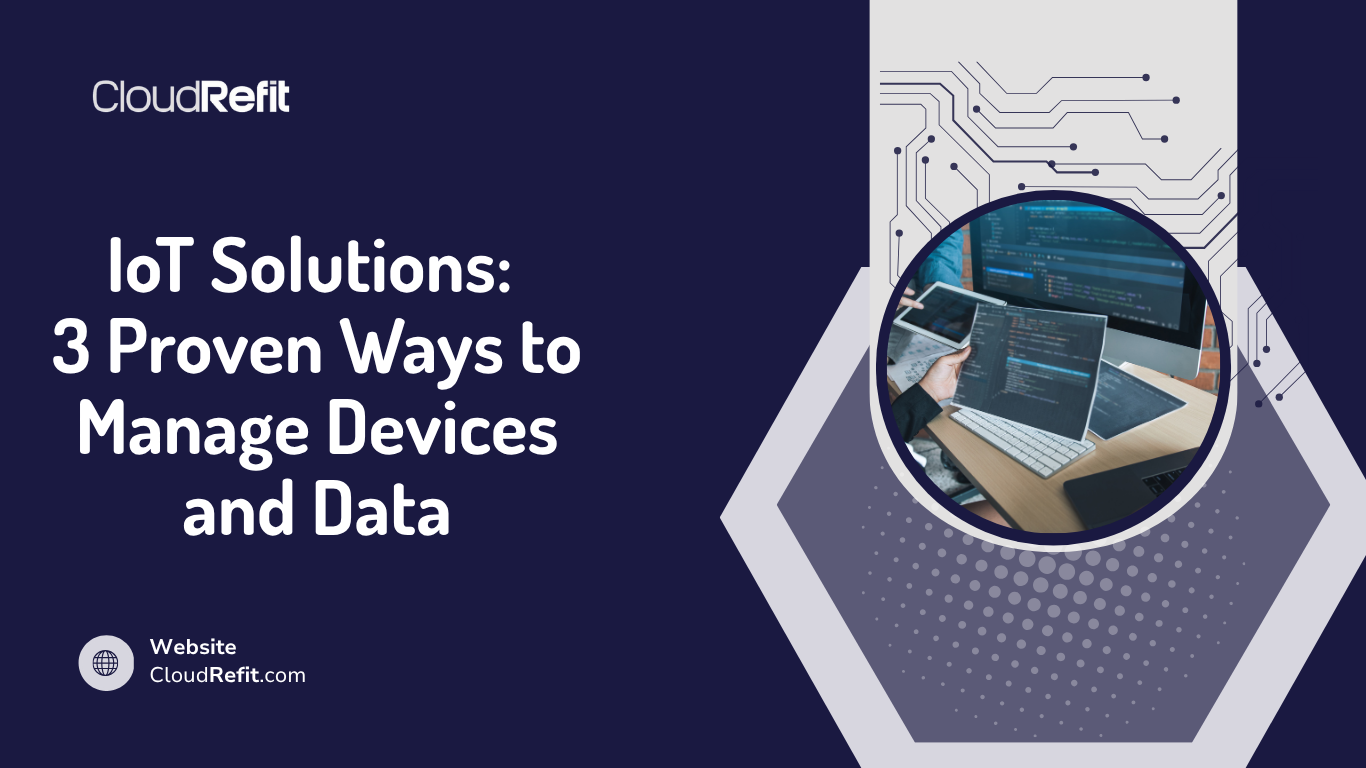IoT solutions are essential for businesses relying on real-time data from thousands of devices. LogisticsRegion faced challenges in performance and cost, leading them to adopt open-source IoT solutions. This case study shows how they built a fast, flexible, and cost-effective platform—achieving 35% cost savings and high operational efficiency.

Project Background & Objectives
LogisticsRegion, a prominent logistics provider, sought a scalable and cost-effective IoT solutions platform to support its rapidly expanding fleet of smart sensors. With over 10,000 connected sensors generating data daily, the company faced increasing demands in processing, real-time analytics, and platform efficiency.
The core objectives of this project were:
- Ingest and process IoT data streams in real time
- Scale IoT solutions horizontally for millions of events hourly
- Reduce platform costs by 30–40%
- Enable rapid feature development on the IoT solutions platform
By embracing open-source IoT solutions, LogisticsRegion successfully avoided vendor lock-in, enabling full ownership of their architecture and roadmap.
Technical and Operational Challenges
LogisticsRegion’s shift to IoT-driven operations surfaced multiple challenges that required a robust, modular solution :
1. Massive Data Volume:
Over 5 million messages/day
Required scalable and reliable IoT solutions for real-time data ingestion and handling
2. Protocol Diversity
Devices communicating via MQTT, CoAP, and HTTP
Needed a unified protocol gateway to normalize and route data into a central system
3. Low Latency Requirements
Critical system alerts needed to trigger in under 500 ms
Demanded an optimized and responsive IoT solutions pipeline
4. High Licensing Costs
Legacy platforms cost $20,000+ per month
Migration to open-source IoT solutions significantly reduced recurring expenses
5. Monitoring Gaps
Existing tools lacked visibility into the full IoT stack: brokers, processors, and storage systems
Open‑Source IoT Solutions Architecture
To meet their ambitious goals, LogisticsRegion deployed a robust, cloud-native IoT solutions architecture built entirely on open-source tools.
3.1 Message Broker with Apache Kafka
Kafka was deployed on Kubernetes as the backbone of the messaging layer
Configured with 20 partitions per topic to handle high-throughput IoT traffic
3.2 Time‑Series Storage with InfluxDB
InfluxDB was selected to store critical telemetry (temperature, vibration, etc.)
Retention policies were optimized to balance cost vs. accessibility
3.3 Real‑Time Processing via Kafka Streams & ksqlDB
Anomaly detection and alerting rules were implemented using Kafka Streams
ksqlDB enabled business analysts to create streaming SQL views for dashboards
3.4 Visualization and Alerts with Grafana & Alertmanager
Grafana dashboards visualized real-time metrics and device health
Alertmanager integrated with Slack/email to notify teams of threshold breaches
Together, this open-source IoT solutions stack formed a resilient, extensible, and budget-conscious platform.
Implementation Phases & Roadmap
| Phase | Key Tasks | Duration |
| Planning & Design | Define system needs, protocols, architecture | 2 weeks |
| Initial Deployment | Launch Kafka, InfluxDB, Grafana on Kubernetes | 1 month |
| Integration | Develop connectors and real-time stream apps | 3 weeks |
| Testing | Run load tests and simulate failovers | 2 weeks |
| Production Rollout | System go-live, training, documentation | 1 week |
| Continuous Tuning | Broker scaling, retention tuning, SLA monitoring | Ongoing |
Results & Metrics
The project delivered measurable improvements across performance, cost, and efficiency:
- 35% Cost Reduction: Monthly platform costs dropped from $20K to $13K
- <500 ms Alert Latency: 95% of critical alerts met or exceeded SLA
- 99.9% Message Durability: Kafka’s replication provided near-zero data loss
- 1‑Hour Device Onboarding: Reduced from 4 hours with automated pipelines
These outcomes underscore the transformative value of scalable, open-source IoT solutions in high-volume environments.
Lessons Learned & Best Practices
- Protocol Gateway: Streamlined message flow by routing all MQTT, CoAP, and HTTP messages into Kafka topics
- Tiered Storage: Combined InfluxDB for hot data with Ceph/MinIO for cost-effective archival
- Multi‑Layer Monitoring: Integrated broker metrics, stream processing stats, and storage telemetry into a single monitoring suite
- Iterative Enhancement: Adopted an agile approach, evolving the IoT solutions platform by adding analytics and location-aware features over time
Future Scaling Recommendations
To future-proof the platform, LogisticsRegion plans to:
- Edge ML Inference: Deploy lightweight ML models on edge devices to pre-filter or enrich sensor data
- Self‑Service ksqlDB: Empower non-technical users with ksqlDB interfaces for ad-hoc data exploration
- Elastic Kafka Scaling: Implement automation for partition reassignment and broker elasticity based on system load
These strategies will ensure that the IoT solutions infrastructure remains adaptive and cost-effective as usage scales.
Conclusion
This case study demonstrates how open‑source IoT solutions deliver high performance, low latency, and substantial cost savings.
Success Story: LogisticsRegion’s IoT solutions platform now excels in reliability and scalability—yours can too.
📩 Book a free consultation with CloudRefit to design custom IoT solutions that drive innovation and efficiency.
🔗 www.cloudrefit.com | ✉️ [email protected]

